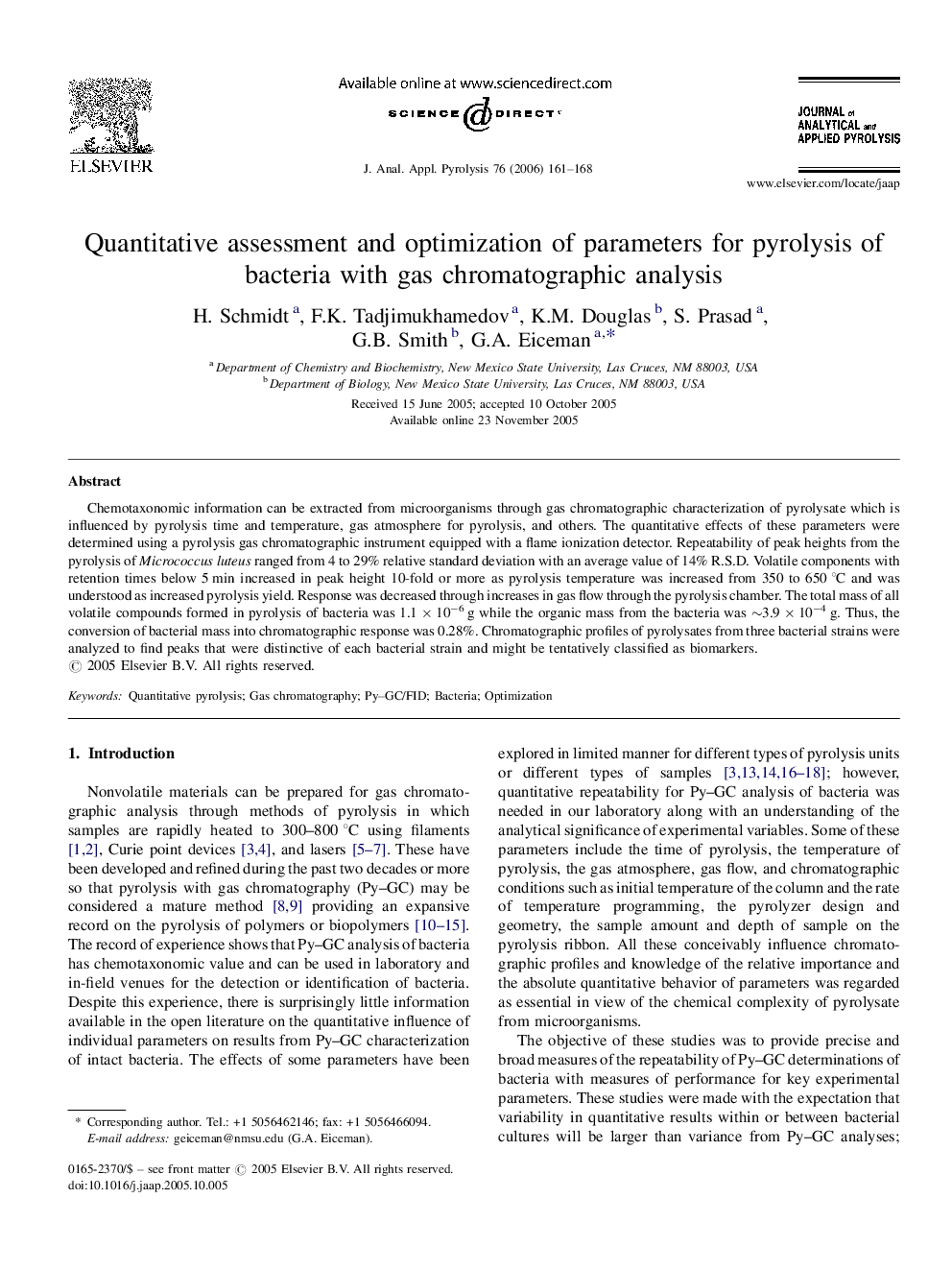| Article ID | Journal | Published Year | Pages | File Type |
|---|---|---|---|---|
| 1198215 | Journal of Analytical and Applied Pyrolysis | 2006 | 8 Pages |
Chemotaxonomic information can be extracted from microorganisms through gas chromatographic characterization of pyrolysate which is influenced by pyrolysis time and temperature, gas atmosphere for pyrolysis, and others. The quantitative effects of these parameters were determined using a pyrolysis gas chromatographic instrument equipped with a flame ionization detector. Repeatability of peak heights from the pyrolysis of Micrococcus luteus ranged from 4 to 29% relative standard deviation with an average value of 14% R.S.D. Volatile components with retention times below 5 min increased in peak height 10-fold or more as pyrolysis temperature was increased from 350 to 650 °C and was understood as increased pyrolysis yield. Response was decreased through increases in gas flow through the pyrolysis chamber. The total mass of all volatile compounds formed in pyrolysis of bacteria was 1.1 × 10−6 g while the organic mass from the bacteria was ∼3.9 × 10−4 g. Thus, the conversion of bacterial mass into chromatographic response was 0.28%. Chromatographic profiles of pyrolysates from three bacterial strains were analyzed to find peaks that were distinctive of each bacterial strain and might be tentatively classified as biomarkers.
